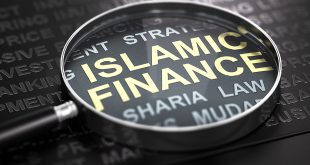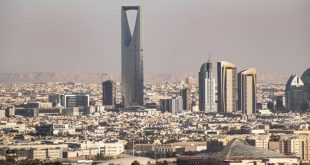 The historic transition towards an Asian Century is generating a treasure trove of both symbolic and real images of the shift from swords-to-plowshares. One of the most thought-provoking is the conversion of Sri Lanka’s former military headquarters in a prime location on the Colombo seafront into an area for mega-projects.
The historic transition towards an Asian Century is generating a treasure trove of both symbolic and real images of the shift from swords-to-plowshares. One of the most thought-provoking is the conversion of Sri Lanka’s former military headquarters in a prime location on the Colombo seafront into an area for mega-projects.Once dotted with grim, heavily-fortified garrisons and gun barrels poking out from behind sandbags and camouflage netting, the entire area has been swept clean to make way for a massive seven star Shangri-La hotel. Its Hong Kong-based owning company, according to local media reports, has purchased six acres for US $75 million. The remaining four acres are also up for sale to other investors. The Sri Lankan government, according to the reports, hopes to earn revenue of US$125 million on land sales alone.
For the tourism industry, this is ample proof of tourism’s contribution to the peace dividend.
Sri Lanka is one of Asia’s most strategically located and tourism-friendly countries, with an highly literate workforce and an ancient history. The 2009 termination of a murderous 30-year civil war has paved the way for economic rehabilitation and national reconciliation, with tourism playing a potentially lead role in both strategies. The devastation caused by the December 2004 tsunami made Sri Lanka the victim of a double-whammy – hit by both natural and man-made disasters. The ups and downs of the global economy were making it even more difficult to chart a future development plan.
Today, proving the strength of democracy in the country, a vigorous debate is under way about the best way of shoring democratic institutions with checks and balance mechanisms, eliminating corruption, narrowing the rich-poor income gap and ensuring justice, religious and ethnic harmony, amongst many others.
In the midst of this, the positive changes are unmistakable. The once-ubiquitous security checkpoints are gone, especially in and around Colombo airport. Shops, restaurants and offices are abuzz with activity. Colombo city, Galle and Negombo (all three of which I visited), and many other cities, are free of garbage, cigarette butts and eyesore posters. Weekday traffic is devastatingly bad in Colombo, but that is yet another indicator of “normalcy”. The national mood barometer rises and falls in relation to the fortunes of its cricket team. It fell when the country lost the 20-20 Cricket World cup competition to the West Indies last October and rose again when it demolished New Zealand in the first Test in Galle last week.
And yes, tourism is booming again. According to the latest figures posted on the Sri Lanka Tourism Development Authority website, visitor arrivals in Jan-Oct 2012 totalled 774,151, up 16% over 667,569 arrivals in the same period of 2011. In 2013, average monthly arrivals are sure to cross 100,000. The official target according to the National Tourism Development Strategy 2011-16 is for 2.5 million arrivals by 2015. Tourism has been identified as major contributor to the nation-building promise.
Here are 10 reasons to make Sri Lanka the next stop of a leisure or special interest holiday or MICE event.
1. Grow the Asian Century: Every visit to the country contributes to the emergence of an Asian century. In many parts of Asia, (Myanmar, the Philippines, India, Pakistan, Nepal, and others) a major search is under way for the best socio-economic-political models to build peace, justice, reconciliation and prosperity. With the end of the conflict, the public sense of pessimism, gloom and despair has lifted. Hope for a better future has brought a more optimistic look to people’s faces. Certainly, social and personal problems plague every society but nothing is stopping ordinary people from pursuing self-improvement, education and entrepreneurship. For the first time in years, they see light at the end of the tunnel.
2. Peacebuilding:The local newspapers are full of the ups and downs of the problems of peace- and nation-rebuilding. But one very valuable lesson Sri Lankans have learnt well is that playing ethnic card and dividing societies along racial lines is a lose-lose proposition. The country’s multi-cultural, multi-racial society is its best asset in a globalised world, and goes to the heart of its tourism promotion message. Every effort is being made to prevent a resurgence of the deadly, divisive, multi-headed hydra that so devastated the country. Politicians of many other Asian countries need to take note.
3. Job creation: No industry creates more jobs more quickly than tourism. The Shangri-La group is one of many investors flocking to avail of new opportunities. Jetwing, one of the largest hotel and travel groups, is opening a number of fabulous new hotels such as the Jetwing Lagoon, near Negombo. More hotels are coming up as investors take advantage of fast-track investment facilities. These are creating hundreds of new jobs.
4. Infrastructure development: The completion of an 116-kilometre highway from Colombo to the southern port and resort city of Galle has cut travelling time from nearly four hours to about 90 minutes. Infrastructure funds are coming in from international banks and finance groups such as the World Bank and the Asian Development Bank. Much money will also pour into the former Tamil Tiger strongholds in the North where the poverty levels are highest.
5. English widely spoken: Ease of communications is a primary by-product of the high literacy rate and one of the fringe-benefit legacies of British colonialism. For tourists, asking for directions and talking to hotel staff is easy. So is reading the newspapers, watching TV and conversing with people on the streets. Those who want to take a deeper look at the country, behind the superficial tourist literature, can easily do so.
6. Visas improved: Of the many policy measures implemented to boost tourism, this is by far the best. Although citizens of most Western countries don’t need visas to come to Sri Lanka, citizens of many key Asian markets do. However, the process has been vastly simplified via an online visa application that generates a response from the Department of Immigration & Emigration within hours. Upon arrival, a QR code sticker is pasted in the passport. Upon departure, this is simply scanned again. It took me less than 30 seconds to pass immigration.
7. Variety of destinations: From culture to beaches to rainforests and Buddhist pilgrimage sites, Sri Lanka offers a mind-boggling variety of destinations to suit just about every demographic profile, budget and market niche except winter holidays. As a ratio of small area and population, it boasts the highest number of UNESCO heritage sites – six cultural and two natural. Buddhist pilgrimage traffic is already running high to holy spots such as the Temple of the Tooth in Kandy.
8. Great product development: Ayurveda and herbal treatments are only the tip of the iceberg. A new generation of world-class products are emerging, incorporating the best of new designs, eco-friendliness and technology. Training facilities are also on the rise. Cruise ships are set to step up their calls. Conferences will enjoy getting a motivational talk from some of the world’s best cricketers. And students in non-English speaking countries will find Sri Lanka an excellent place to learn English.
9. More airline access: As an island-nation, Sri Lanka is almost entirely dependent on aviation for visitor arrivals. The country is served by a broad range of airlines, including Gulf carriers, low cost airlines and the national carrier Sri Lankan Airlines.
10. Relatively low costs: The exchange rate is 129 rupees to the dollar and you can get a pretty good meal for 450 rupees, which is less than US$4. Costs of getting around and shopping are insignificant. The entrance charge to the national museum was 500 rupees. One area that will benefit substantially from increased tourism is the handicraft and jewellery sector. Both are relatively inexpensive, but need demand to grow in order to boost diversity and creativity. It will be a huge blessing for the rural areas and low income people.
Conclusion
Sri Lanka is one of the best “value for money” destinations in Asia today. If a politically peaceful, economically prosperous and environmental sustainable society can be made to emerge by drawing upon the country’s ancient wisdom, historic heritage and contemporary knowledge, it can have a positive ripple effect across Asia. The “Pearl of the Indian Ocean” can be best described as undergoing a long period of convalescence following some heavy-duty surgery to remove a festering cancer. As long as no post-operative complications set in, the “patient” can, and should, make a full recovery fairly soon. An influx of visitor arrivals can certainly provide some nourishment.
This writer, Imtiaz Muqbil, visited Sri Lanka between Nov 16-21. He is Editor of Travel Impact Newswire and is a much respected as a travel industry analyst, in the perspective of global politics and issues of war and peace. Imtiaz is a personal friend whom I have known for 35 years. He is based in Bangkok — Lakshman Ratnapala
– Asian Tribune – 23.11.2012
 Sri lanka Muslims Web Portal Diversity and Inclusiveness
Sri lanka Muslims Web Portal Diversity and Inclusiveness



